

REE’s technology gives mobility companies across the world a blank canvas to build any size or shape of electric or autonomous car, van, or truck class 1-6, for virtually any application and any target market.
REEcorner™ technology enables our design team to approach vehicle design differently from traditional automotive manufacturers. When designing vehicles built on the REE platform, our designers take an industrial design approach, focusing on user needs and vehicle functionality. The modular and versatile REEcorner™ allows for complete design freedom, melding together form and function to solve the specific user’s specific needs.
This complete design freedom is what REE is all about, and to help showcase this, we wanted to work with design students from the renowned Coventry University in the UK to see what their vision of tomorrow’s EV world, powered by REE, could look like.
As part of the challenge, we asked Automotive and Transportation design students to explore an electric vehicle based on the REEcorner™ and EV platform technology. Their EV design had to fulfill the specific needs of their target application and have a futuristic feel. They had to submit exterior and interior 3D renderings and a presentation to a judging panel led by REE’s chief designer, Amos Boaz.
The collaboration with Coventry University design students was about mentoring upcoming vehicle designers and exploring the possibilities the future of mobility brings. The design students responded well to this challenge, and we had some great discussions on what a vehicle could be in the not-so-distant future.
To support the students, Amos met with students 1:1 and in groups sessions throughout the process, to offer them guidance and coaching as they got ready to submit their final entries to our panel, who assessed them based on:
- Leveraging the advantages enabled by REE technology
- Differentiation and uniqueness
- Function and practicality.
The REE panel of judges saw some amazing entries, which made the judging process a tough one, but they were able to select several winning designs – which we’re proud to present here.
Meet our winners
While some students focused on vehicles that catered to a diverse clientele in the same EV (locals and tourists alike!), some designs offered bespoke designs that catered to end users – striking the perfect balance between work and home, delivery concepts and even zero emissions racing. And others envisioned new rescue vehicles and cars with split personalities.
Yongkang Son – REE Flex
This project was geared towards maximizing the user’s freedom of usage by putting REE’s unique modularity and functionality to use. An EV that can be customized to suit a user’s individual taste and functionality.
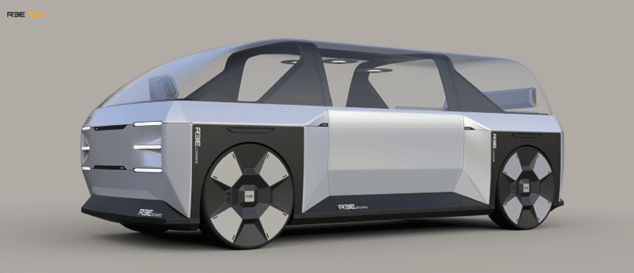

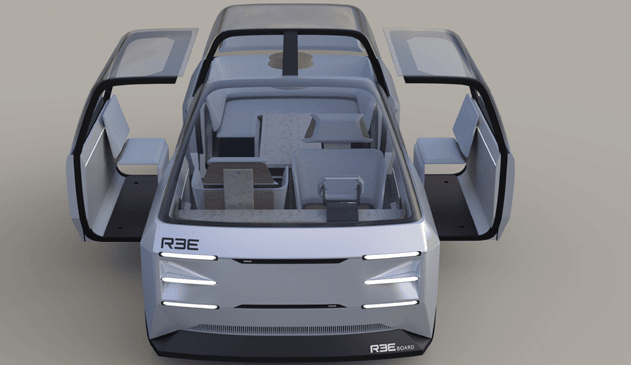
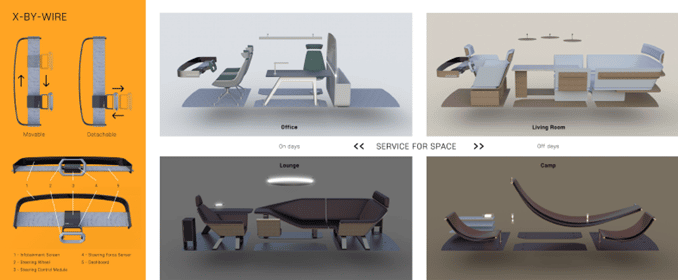
What we loved about this design: Modularity is the key thing in this project. It shows an example of how the REEcorner™ enables the interior design to change based on user need, whilst the external vehicle stays the same. What we thought most interesting about this concept is that it presents a new concept for transportation in providing the ability to design your own interior like your home.
Raj Ratilal Solanki – trio
Why trio? Because not only does it cater to local residents, it also serves tourists, with onboard services like a mobile café.
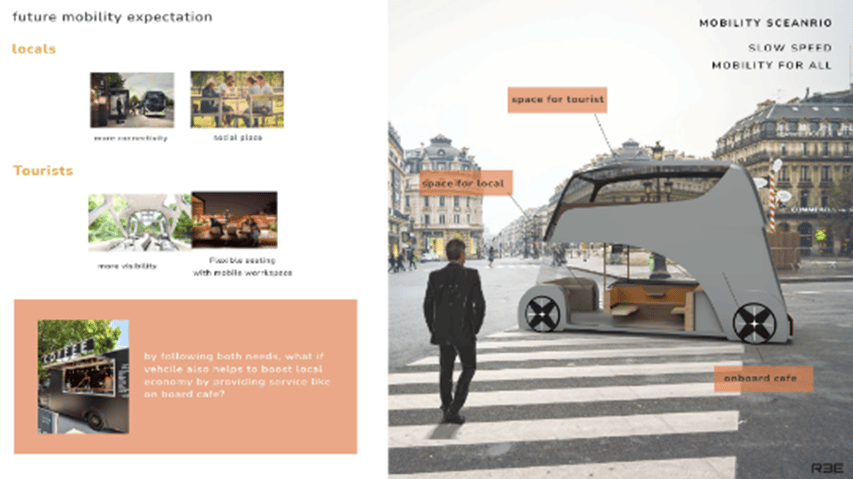

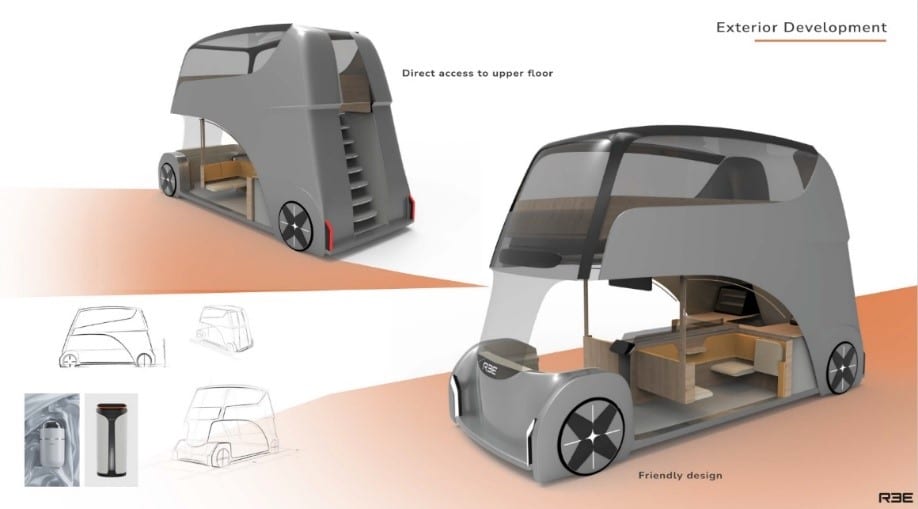

What we loved about this design: This project is unique and has leveraged the REEcorner™ to build a vehicle on two levels. It shows a new approach to how mobility can change the city. From a design standpoint this solution is individual in its shape and style, even though it is a big, high mobility solution, the design makes it look light and elegant, using large space of glass and generous opening on the first floor and arches from one side to the other. The REEcorner™ is used in a smart way providing a low, flat floor, while providing a place where the batteries do not interfere.
Alan Charco Zachariah – Fusion
A vending machine on wheels + REE technology = a café with social space! This design’s compact vehicle size allows easy maneuverability in urban roads, and while in extended mode, the front wheels allow the platform to move to create café space.
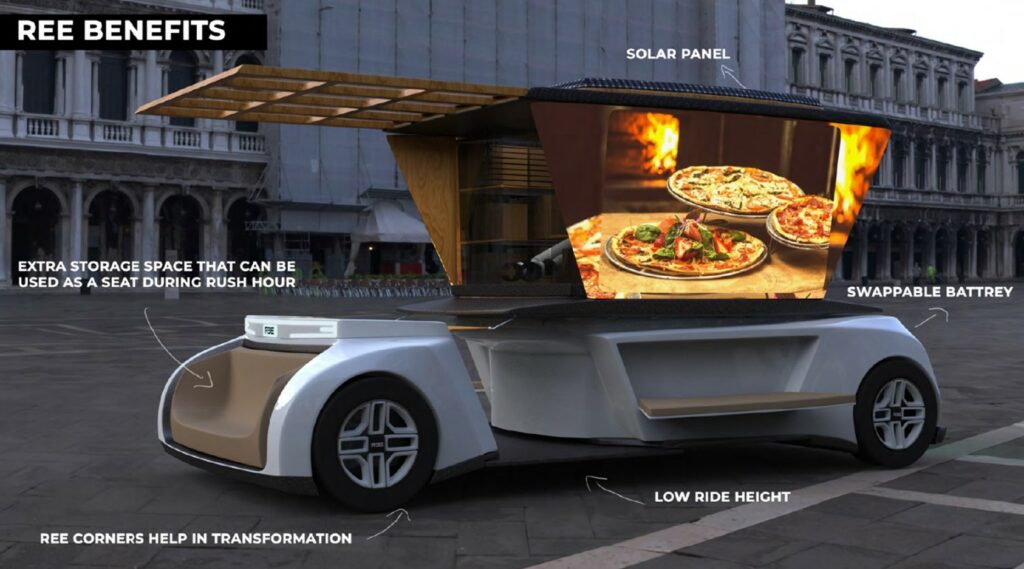

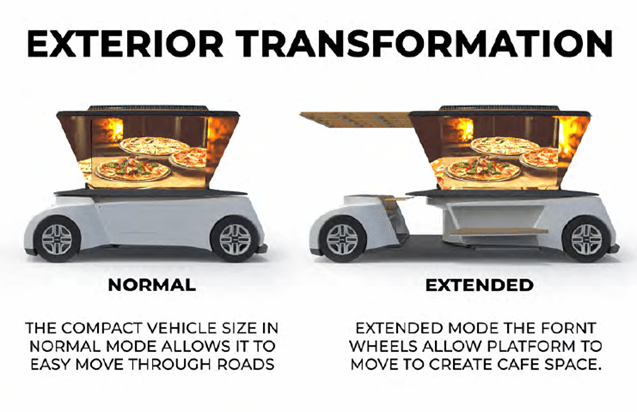

What we loved about this design: This solution is unique and shows how mobility could change the city in the future, allowing different spaces to become social places. In this example the REEcorner™ enables a versatile food truck concept that can easily be transitioned from various food types whilst maintaining the same exterior vehicle.
Aras Volosenko, Andras Balazs Major, Eungbin Seo, Chaeyeon LeeSight, Jiwon Jeong – sight
A vehicle that also provides shelter for wildlife photographers – this design is essentially a moveable basecamp for a photographer, that can also be camouflaged for stakeouts.
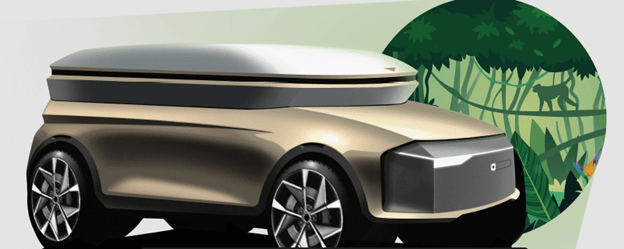


What we loved about this design: The solution clearly showcases the possibility of design with the REE platform. The vehicle has three main functions – bringing the photographer to the wild, giving them somewhere to stay in the wild and a base to photograph the wild from, all while being hidden inside the vehicle. The REEcorner™ is used to provide a comfortable interior living space, and the horizontal parting line of the roof and frontal drawers provide functional external space, as well as adding to the overall look and feel.
Congratulations to all our entries
Each of our finalists received a host of REE goodies, and two stand out entries were awarded with an additional prize, to help support their onwards careers. Yongkang Son received an iPad Pro – the ultimate design tool for a designer, for their REE Flex design. And Raj Ratilal Solanki was offered a once in a lifetime three-month internship with REE, working along Amos and his team.
We want to give a huge shoutout to everyone who took part in this design challenge – we have loved seeing all of the talented participants and their entries.
A big thank you to Professor Alan Barret of Coventry University who supported the success of the project, and contributed his own vision about the future of mobility.
